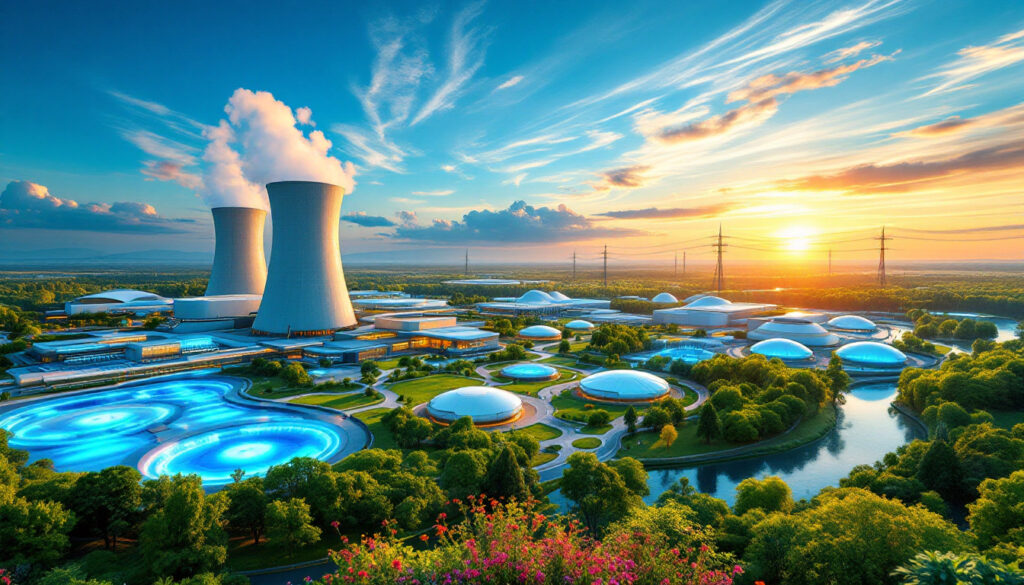The uranium market is experiencing its most robust cycle in over four decades. Industry veteran Scott Melby described it as "the strongest market narrative in 41 years." Today’s supply constraints and the renewed global focus on nuclear power have led to significant shifts in uranium sector trends at PDAC 2025, signalling an exciting era for the industry.
Uranium prices have steadily climbed to approximately $64 per pound. This rise reflects growing demand and recognition of nuclear power’s essential role in the clean energy transition. In the US, a domestic premium of $2-3 per pound is emerging as energy security becomes a priority. Analysts note that these dynamics are closely linked to uranium sector trends at PDAC 2025.
Recent market analysis reveals that strategic investments are being made in mining and exploration. For those interested in the mining side of the business, our comprehensive guide to global uranium production provides a detailed overview. Market movements continue to influence the outlook, with many investors turning their attention to emerging opportunities.
Uranium market forecasts suggest that nuclear capacity will double by 2040 and potentially triple by 2050. This anticipated growth is driven by both conventional reactors and next-generation technologies like Small Modular Reactors (SMRs). As governments worldwide seek sustainable energy solutions, the drive to expand nuclear energy production intensifies.
At recent climate conferences, over 30 countries and 160 companies pledged to expand nuclear capacity at COP 28 and COP 29. This international commitment further underscores the role of nuclear power in achieving carbon-free energy goals. Such momentum is setting the stage for transformative changes within the global energy mix.
How Is the Russia-Ukraine Conflict Affecting Uranium Supply?
The geopolitical landscape has reshaped uranium supply chains. The Russia-Ukraine conflict, for instance, prompted US lawmakers to pass legislation banning Russian uranium imports. This policy shift is part of a broader strategy to reduce dependency on politically unstable regions while reinforcing domestic energy security.
The ban is scheduled for full implementation by the end of 2027. It provides the industry a window to develop alternative sources while preparing for a future with limited Russian imports. As noted by analysts, these changes represent a significant step toward long-term supply certainty.
Approximately 25% of US enrichment and 50% of uranium now originate from Russia, Kazakhstan, and Uzbekistan. This mix of suppliers creates risks that the ban aims to mitigate. With these vulnerabilities acknowledged, the industry is adjusting its supply chains to meet future demand.
To support this transition, the US has allocated $3 billion to revitalise domestic conversion and enrichment capacities. Such investments highlight growing confidence in homegrown projects, paving the way for a stronger, more independent nuclear fuel cycle. This creates a pathway for strategic uranium investment opportunities in the region.
What Is Driving the Renewed Interest in Nuclear Energy?
Public opinion has shifted dramatically regarding nuclear power. Once a politically divisive issue, nuclear energy now commands cross-party support for its safety, reliability, and carbon-free credentials. This change of heart is critical as it fuels the expansion of nuclear capacity globally.
In the US, both Democrats and Republicans view nuclear energy favourably. Democrats appreciate its contribution to zero-emission energy, while Republicans value its ability to enhance energy independence. This bipartisan support creates a stable foundation for new projects and sustained growth.
Unexpectedly, the technology sector has emerged as a strong proponent of nuclear energy. Data centres are driving an increase in electricity demand that renewables alone cannot meet. For example, in Virginia, data centres already consume 20% of the state’s electricity—a figure set to double in the coming years.
The artificial intelligence revolution further intensifies energy needs. AI applications typically require ten times the computing power of standard operations, making nuclear power’s 24/7 generation an ideal complement. This trend reinforces the broader narrative of uranium sector trends at PDAC 2025.
How Are Tech Companies Influencing the Nuclear Industry?
Tech moguls such as Peter Thiel and Elon Musk are joining the nuclear debate, advocating for faster licensing and innovative solutions. Their involvement is influencing an industry traditionally associated with long regulatory timelines and cautious strategies. These business leaders are now pushing for a more dynamic approach to nuclear energy deployment.
Major technology companies, often known as hyperscalers, are not content with simply reducing energy demand. Instead, their projections for energy use continue to climb driven by AI, cloud computing, and widespread digitalisation. This relentless growth is transforming the energy procurement strategies of companies like Amazon and Microsoft.
Amazon, for instance, has partnered with Talen Energy to secure nuclear power directly from plants. This approach means electricity is delivered straight from the source to data centres, bypassing traditional grids. Such moves could set the stage for future energy distribution models.
Microsoft has taken bold steps by investing in efforts to restart shuttered reactors. By leveraging existing infrastructure, tech giants are securing a reliable supply of carbon-free baseload power. Collaborations with SMR developers further underscore the transformative potential of these partnerships.
What Is the Status of US Uranium Production?
The United States, once the world leader in uranium production, is witnessing a revival of domestic mining. After years of decline, new projects are reviving key uranium mines and pushing forward production advancements. In 2024-2025, significant milestones signal the start of a domestic renaissance.
One pivotal development was the production of the first yellowcake at Christenson Ranch in Wyoming. This achievement marks the beginning of renewed interest in domestic output. Several projects across Wyoming, Texas, and Utah are now advancing toward production.
US mines often benefit from low capital and operating costs. These competitive advantages stem from the suitability of domestic deposits for in-situ recovery methods. Investors and policymakers alike are eyeing these advantages as drivers of market stabilisation.
Past regulatory headway further accelerates this revival. Many projects in the US are already permitted or partially constructed, ensuring rapid restarts. This preparedness positions US producers favourably as global demand intensifies.
For further insights on mining operations, consider our comprehensive guide to global uranium production.
How Will Small Modular Reactors (SMRs) Transform Energy Generation?
Small Modular Reactors (SMRs) are set to revolutionise nuclear technology. Expected to be operational between 2028 and 2030, SMRs offer faster construction, reduced capital costs, and enhanced safety compared to traditional plants. Their innovative design positions them as a keystone in future nuclear strategies.
The United States has a unique advantage in SMR development, drawing on decades of naval experience. With small reactors already powering 84 submarines and numerous aircraft carriers, the US military has provided invaluable operational data that is now applied to civilian projects.
SMRs are versatile and can serve data centres, desalination plants, industrial heat processes, and mining operations. Their flexibility opens up entirely new markets for nuclear energy, expanding the technology’s appeal beyond conventional power generation.
Government support for SMR development is robust in the UK, Canada, and the US. Policy frameworks and funding are creating multiple pathways to fast commercialisation. Many experts believe that if initial SMR projects succeed, they could restore nuclear’s market prominence and enhance uranium sector trends at PDAC 2025.
Industry projections suggest that once SMRs are commercialised, they could drive costs down and accelerate deployment. This shift will create favourable uranium market dynamics and future investment prospects for investors looking at long-term gains.
What Is Trump's Energy Dominance Policy?
During the Trump administration, an Energy Dominance Council was established to expedite domestic energy production. This council coordinated policies across federal agencies to accelerate growth in all energy sectors, including nuclear. The approach aimed to remove regulatory bottlenecks and streamline project approvals.
The council’s leadership included experienced figures like Secretary Bergham and Interior Secretary Wright. Their expertise helped drive pragmatic policies and emphasised the urgency of enhancing domestic energy production. Critical infrastructure projects for uranium mining and nuclear power have benefitted from this coordinated effort.
This focus on regulatory simplicity underlines how Trump’s policies are reshaping global commodity markets. The council also targeted common delays, such as permitting issues and supply chain constraints, to fast-track energy projects.
There is even discussion of declaring a national energy emergency to further accelerate development. Such measures would provide additional legal authority to override outdated regulatory hurdles, ensuring the US remains at the forefront of the global energy race.
How Will the 10% Canadian Energy Tariff Impact Uranium Markets?
The proposed 10% tariff on Canadian energy imports has injected uncertainty into the uranium sector. Though industry groups maintain neutrality, the potential for disruption is real. US uranium prices have already begun reflecting a premium for domestic materials as utilities prepare for changes.
Under a tariff regime, uranium located within US borders could become more attractive. This shift may encourage both miners and traders to invest further in domestic projects. Analysts believe that the uncertainty will prompt accelerated contracting and investment decisions.
The situation highlights North America’s interconnected energy markets. Canada, traditionally a reliable supplier, may experience adjustments in trade patterns. Negotiations at high government levels continue, with many expecting that market players will eventually adapt to the new conditions.
For an international perspective on market shifts, insights from kazakh uranium miners reveal how global strategies are evolving in response to these challenges.
What Are the Future Projections for Nuclear Energy?
Industry observers anticipate announcements of several new large-scale reactors in the US during 2025. This would be the first major build cycle since the early 2000s. Such projects are expected to have a significant impact on long-term uranium demand forecasts.
Large utilities like Dominion in Virginia may require capacity additions of 1,500-5,000 megawatts. These requirements are driven by expanding data centre operations and other industrial needs. As nuclear plant construction accelerates, investor attention is increasingly drawn to uranium sector trends at PDAC 2025.
Projections for uranium demand are promising, with annual increases of 2-3% through 2030. In the following decade, growth could accelerate to 4-5% as SMRs become widely deployed. This robust growth outlook signals a definitive shift from decades of flat demand.
Key points for the future include:
- Rapid SMR commercialisation and declining costs.
- Renewed investment in traditional large reactors.
- Increased focus on domestic supply chains driven by new policies.
This synthesis of trends and projections underlines the transformative nature of the current nuclear renaissance. For broader context, insights from uranium rebooted 2025 provide an interesting snapshot of future market movements.
FAQ: Common Questions About Uranium and Nuclear Energy
How does AI development affect energy demands for nuclear power?
AI development drives unprecedented growth in energy demand. Data centres need reliable 24/7 power, and each AI application typically consumes ten times the power of standard computing operations. Nuclear energy’s continuous generation makes it an ideal complement to renewable sources.
What is the timeline for new nuclear reactors coming online in the US?
The first Small Modular Reactors (SMRs) are expected between 2028 and 2030. Meanwhile, traditional reactors like Vogtle Units 3 and 4 have commenced operation. Additional conventional reactors, potentially announced during 2025, may become operational between 2032 and 2035.
How will the Russia-Ukraine conflict resolution impact uranium imports?
Despite any conflict resolution, legislation banning Russian uranium will proceed through 2027. This policy shift is designed to reshape supply chains permanently, reducing dependency on politically unstable regions and creating new opportunities for domestic fuel cycle development.
What role will Canada play in US uranium supply given potential tariffs?
Canada is likely to remain a crucial supplier despite tariff uncertainties. Although tariffs may temporarily disrupt trade, the inherent integration of North American energy markets should lead to adaptive solutions, such as joint ventures or US-based facility investments.
How competitive is US uranium production compared to global producers?
US production is highly competitive, with operating costs ranging between $25-35 per pound for in-situ recovery. While not matching the scale of Kazakhstan, US projects benefit from favourable geology, established permits, and proximity to domestic markets.
Major market forces reaffirm that the shift towards domestic production and advanced nuclear technology will remain central to the industry. Continued focus on uranium sector trends at PDAC 2025 reinforces the sector’s promising future in reshaping global energy dynamics.
Ready to Capitalize on the Next Uranium Market Opportunity?
Discovery Alert's proprietary Discovery IQ model delivers real-time alerts on significant ASX uranium discoveries, instantly empowering you to identify actionable opportunities ahead of the broader market. Understand why major mineral discoveries can lead to significant returns by exploring Discovery Alert's dedicated discoveries page.




